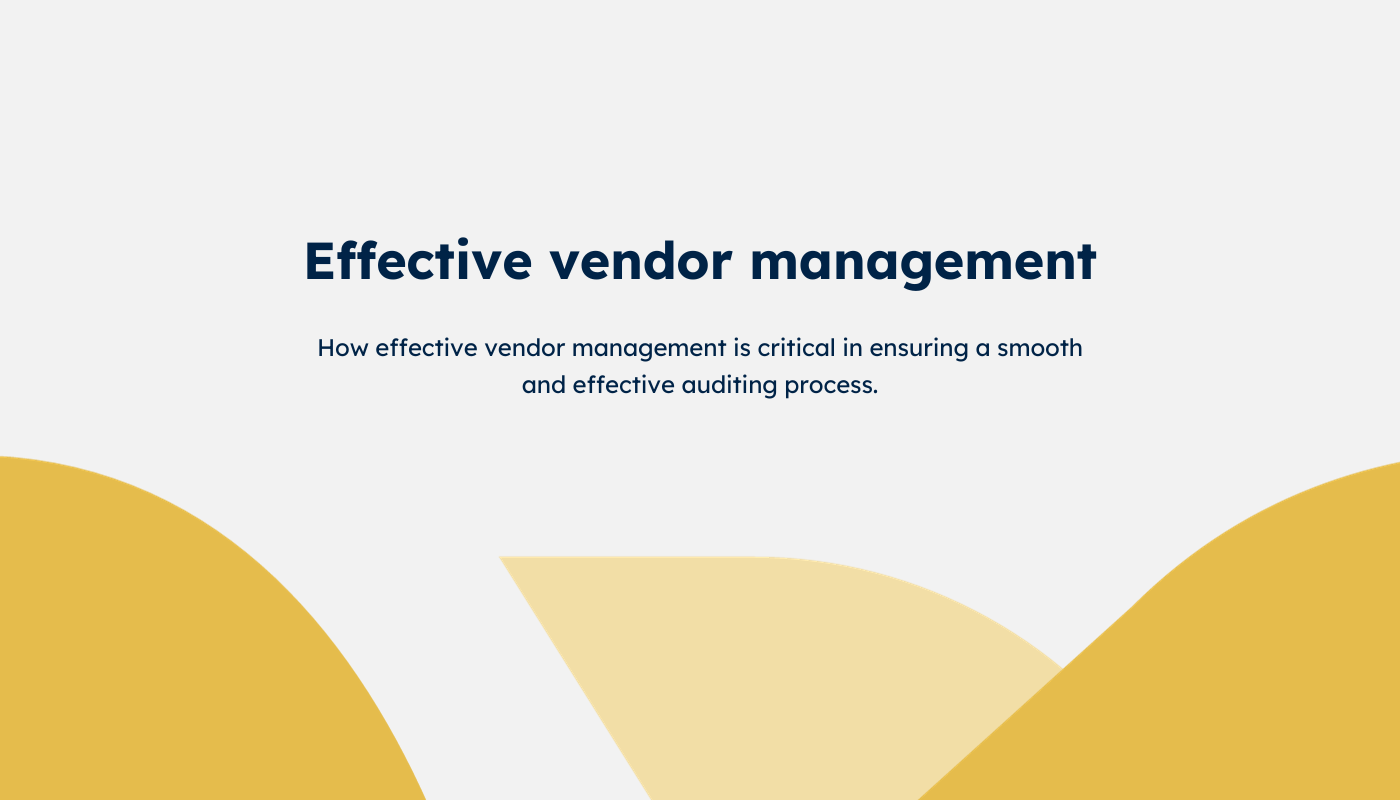
Effective Vendor Management Process
Third-party vendors have a critical role in improving an organisation's operational efficiency and capabilities.
Third-party vendors have a critical role in improving an organisation's operational efficiency and capabilities. Organisations can focus on their core capabilities while depending on specialised suppliers for certain operations by using external knowledge and services. This partnership can allow for cost reductions, utilisation of cutting-edge technology and growth. While there are benefits to third-party relationships, there are also risks related to data security, compliance and the entire reliability of operations. Effective management and monitoring are key for mitigating these risks which can impact the organisation's assets and external stakeholder trust. This blog provides insight into the third-party vendor management process and how it can be used to manage operational efficiency.
Defining Objectives with Vendor Selection
It is important to outline the organisation's goals for working with third-party providers. Establishing clear objectives (e.g., reducing expenses, increasing efficiency, or access to specialised capabilities) will impact vendor selection as well as ongoing performance evaluation. Conducting a comprehensive search of possible vendors, considering aspects such as size and popularity, financial stability, industry compliance and prior performance, is important to ensuring an appropriate vendor is chosen.
Checking the vendor’s geographical location, particularly if they would handle sensitive data subject to international data transfer or processing restrictions, is a key factor when considering alignment with business objectives and responsibilities.
Defining Assessment for Vendors
Risk assessment for a third-party vendor is an important step in protecting an organisation’s interests, data and overall security. The assessment should include assessing all relevant factors to identify any potential risks and mitigations to minimise them. This can include an examination of:
- the vendor’s cybersecurity procedures: for example, data protection policies, encryption mechanisms and overall system security practices.
- previous security events and response processes to determine their vulnerability to prospective attacks.
- the vendor’s location, political, economic and social stability, as well as any potential legal consequences that may come from cross-border data transfers.
- the vendor’s disaster recovery and business continuity procedures: how well-prepared they are to deal with unexpected situations and minimise downtime for protection against significant disruption.
- compliance with laws and regulations: for example, industry-specific norms and data protection legislation applicable to the organisation such as SOC 2 or GDPR compliance.
Defining Roles and Responsibilities
Defining the roles and obligations of third-party vendors is an essential part of an effective partnership, ensuring transparency and alignment between the organisation and its providers. Begin by describing these responsibilities in a detailed contract agreement. Clearly define the scope of the vendor’s services, including the activities, functions, or projects for which they are accountable, and outline the organisation’s required duties. This agreement should also include measurements of performance, service level agreements (SLAs) and any compliance or legal requirements related to the vendor's operation.
It Is important to assign a key point of contact from both the organisation and the vendor to allow effective communication and organisation. This individual coordinates activities, provides relevant information, and addresses any concerns that may emerge. Having a single point of contact encourages consistency and improves the overall efficiency of the collaboration.
Risk assessment for the vendors should be conducted on a periodic basis, typically at least annually for vendors providing material services. On an ongoing basis, this may include checking key performance indicators (KPIs) based on service level agreements (SLAs), quality measurements or timelines to analyse vendor performance.
Defining Termination Procedures for Vendors
Establishing a clear and complete vendor termination procedure is critical for organisations to terminate contracts with third-party providers when necessary. Some of the common procedures include:
- An evaluation of the existing contractual arrangement.
- Determining the conditions or errors that justify termination to confirm if the organisation has legal justification for termination.
- Communication throughout this process (e.g., start a conversation with the vendor to explain the difficulties at hand, offering an option for resolution if possible)
- If a termination is expected, explaining the decision in written communication, stating the justifications for the termination, the effective date, any applicable terms of the contract and an explanation of the transition strategy (e.g., information on the transfer of roles, access to systems or data and any handover processes that are required).
To secure sensitive information, evaluate the vendor's data protection and security procedures. Create a process for the secure recovery or the removal of any data handled on behalf of the vendor. It is important to ensure that the vendor follows non-disclosure and confidentiality agreements, and that any sensitive information is returned or effectively removed. Engage with key internal stakeholders to ensure that the change goes smoothly. This might include IT teams, legal representatives and employees immediately affected by the termination. The relevant parties should be aware of the termination and their responsibilities in the transition and be ready for any changes in procedures or workflows with the existing processes.
References
2017 Trust Services Criteria for Security, Availability, Processing Integrity, Confidentiality, and Privacy (with Revised Points of Focus – 2022)
Disclaimer: AssuranceLab performs the role of an independent auditor across hundreds of client environments. We do not perform technical roles or assessments and this content is not intended to be comprehensive on those technical or detailed aspects of cybersecurity. You should perform further research and seek professional advice as appropriate before acting on any of the information contained here.







